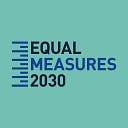If we want to ‘build back better’ for girls and women, the SDGs are the blueprint
By Martha Flynn, Policy and Advocacy Advisor, Equal Measures 2030
“Closures of schools has prevented girls and young women from accessing their normal sources of sanitary towels forcing some to put themselves at risk to earn money to buy supplies” says Emily Maranga, Program Manager at GROOTS Kenya, an Equal Measures 2030 partner. The organisation is working with grassroots women in Kakamega county who have visited households to assess the impact of COVID-19 on women and girls. Advocates in India are also highlighting how existing taboos around menstrual hygiene and store closures are creating challenging conditions for those managing periods while living in lockdown. Even before the COVID-19 pandemic, at least 500 million women and girls globally didn’t have access to adequate facilities for menstrual hygiene management (MHM).
Today marks Menstrual Hygiene Day. MHM is central to efforts to promote gender equality and plays an important role in the achievement of the Sustainable Development Goals (SDGs). The SDGs are an ambitious 15-year framework adopted by all UN Member-States in 2015 to build a better and more sustainable future for all. MHM is key to progress on a number of SDGs, from quality education (SDG 4) to gender equality (SDG 5) and clean water and sanitation (SDG 6).
Equal Measures 2030’s Bending the Curve research released in early 2020 showed that half of countries studied — home to 2.1 billion girls and women — needed to rapidly accelerate in order to achieve key gender equality targets by 2030. Fortunately, the research also shows pockets of rapid progress: just 5% of girls in Ghana completed secondary school in 2003 but 40% did 12 years later, proving that achieving key SDG indicators for girls and women is within grasp.
As the current global pandemic takes centre stage, budgets may be refocused and political attention diverted but the commitments to gender equality enshrined in the SDGs should not take a back seat. The very issues that the SDGs were designed to address are, if anything, more relevant today than ever.
The SDGs provide a roadmap for reducing the impact of the crisis on the most vulnerable and building a more gender equal future for all.
The impacts of COVID-19 are significant for girls and women and one need only look at SDG issues such as MHM to see this. Add to this the dramatic surges seen around the world in gender-based violence and the increasing burden of unpaid work placed on women since the crisis began and the impact of the pandemic on gender equality is clear. The SDGs are a reminder not to lose sight of this full spectrum of these issues and that a multi-sectoral, coordinated approach is needed to address these intersecting challenges
The SDGs offer a blueprint for where investment should be targeted to reduce the impact of the crisis on girls and women.
SDG 1 points to the importance of social protection schemes, programs designed to reduce poverty and vulnerability, that provide crucial economic lifelines for girls and women in times of crisis. The 2019 EM2030 SDG Gender Index showed that even higher income countries were underperforming on social protection. This should be a priority area for investment everywhere to avoid girls and women slipping into poverty. Similarly, SDG 5 highlights the need to ensure women’s equal access to technology, a measure that will prove critical as isolation forces more of our lives online. Globally, nearly 25% fewer women have access to the internet than men. Countries will need to make greater investments to assure full connectivity for everyone and to cater to those who are not online. If governments had prioritised investment in areas such as these before the COVID crisis, their economies and societies might well have proved more resilient.
The ambition of the SDGs to ‘transform our world’ is the rallying call needed to push for the future we want as we rebuild.
‘Business as usual’ would not be enough to build a more sustainable, just and equal world. COVID-19 could well be the watershed we need to address the structures and systems that perpetuate gender equality and hold us all back. The SDGs provide a powerful common language that can mobilise the global community to do this and ‘build back better’ for girls and women.
